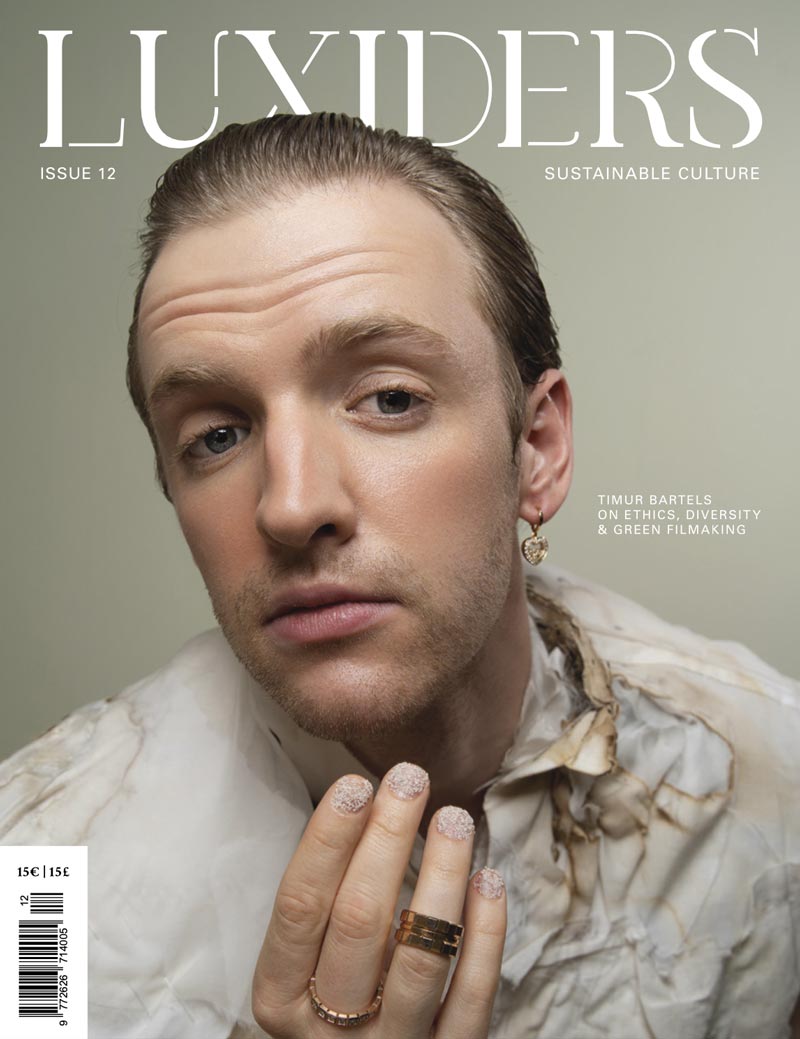Skip to content
Sustainable Fashion
The World’s Finest Handcrafted Luxury Fabrics for High-End Designers
Magic Of Presence And Pause: Interview With Julia Allert
Amber Valletta x Karl Lagerfeld: A Collaboration Empowering African Artisans
- Guide
Hello Spring! 3 Sustainable Brands You Need to Know To Elevate Your Wardrobe This Season
Emerging Designers: Redefining Work-Life Balance With Huili Jin
The Art Of Zero Waste Couture | An Interview with Haixi Ren
New Innovations in Fabrics and Textile Materials | Our Discoveries at Première Vision
Crafting the Future: Florence Rousson on Premiere Vision’s Evolving Vision
“La Boutique Consciente” by Momad Catched The Attention Of Fashion Buyers Activating A More Sustainable Business
Apply Now for the Munich Fashion Award: Honoring Sustainable and Future-Oriented Designers
The diversification of Texworld Apparel Sourcing Paris attracts more buyers
Beauty
Festival Beauty Trends 2025: Eco-Friendly Makeup & Skincare for Music Lovers
Empowerment Or Entrapment: Navigating Modern Beauty Standards
Facing The Demands Of A Sustainable Beauty Industry
Does Screen Time Cause Premature Skin Aging?
Natural Hair Appreciation
Mindfulness And Sustainable Thinking In Sex
Beauty Editorial | Sorry | Letter To The Black Community
Beauty Editorial | Renaissance
Shampoo Bars: The New Eco Option To Hair Care?
Holistic Healing | Exploring Alternative Medicine
The Glamour And The Grit | Unpacking Heroin Chic
Design
10 Questions with David Rockwell: On Sustainability, Innovation, and the Future of Design
Dwelling Home: What Is It And Why Everybody Wants To Know It
Urban Rewilding, Biomimicry And Futuristic Fashion | Interview With Kiki Grammatopoulos
Circular Design: A Comprehensive Guide to a Sustainable Future
Saving Coral Reefs | Interview With Courtney Mattison
Hemp in Design | Interview with Philipp Hainke
Keith Peterson | The Painter Trapped In A Photographer’s Body
Jakob Kudsk Steensen | Song, Land and Virtual Installations
Air-Cleaning Architecture | Building A Greener Future
8 Books On How To Design A Greener World
Floating Homes | From Ancient Villages To Modern Masterpieces
Lifestyle
The Dangerous Rise Of Digital Misogyny, Brainwashed By The Algorithm
Poems to Cure Society: Interview With Hilda Raz
Photographer Sophie Kietzmann: Empowering The Real Identity
Zero Waste Lifestyle: A Complete Guide To Your Sustainable Living in 2025
- Guide
Join Vivobarefoot’s Annual Pilgrimage Retreat At The Broughton Hall Sanctuary: A Soulful Experience You Cannot Miss
Coral, Clay And Conservation | Interview With Beatriz Chachamovits
Is Social Media Pressure The Reason We Are Not Adopting More Sustainable Fashion?
Eco-Museums: A Journey Through the World’s Most Sustainable Cultural Spaces
Dr. Luana Marques | It’s Okay to Not be Okay
- Food
The Mighty Chickpea | Health Benefits And Cooking Tips
Behind Bars | How Zoos And Aquariums Are Failing Animals
Travel
The Most Amazing Tree Houses In The World
Embracing Wellness | Your Guide To Eco-Friendly Yoga Retreats
USA By Bike | The Sustainable Travel Guide
The Airbnb Effect | No Room Left For Locals
Beyond Bali | Exploring Indonesia’s Islands
Preserving Paradise | Tropical Islands Fighting Climate Change
Sustainable Sailing | Your Luxurious Escape
Voluntourism | Helping Without Hurting
Eco-Friendly Escapes | Sustainable Retreats In The UK Countryside
Europe By Bike | The Sustainable Travel Guide
Exploring Costa del Sol with German Influencers | Fun, Adventure & Sustainability

